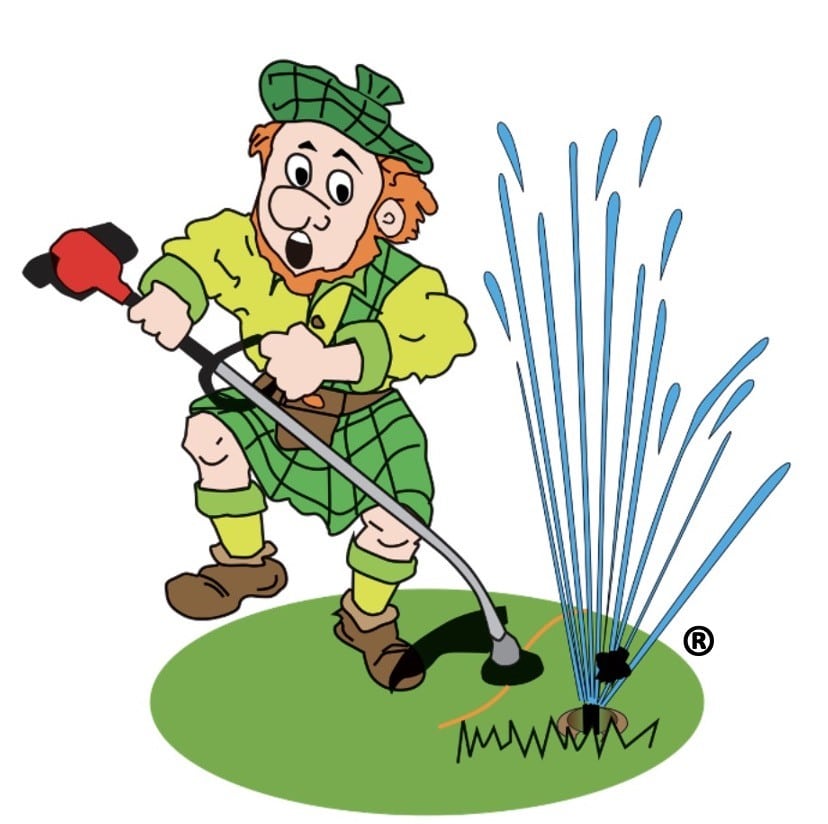When it comes to maintaining your lawn’s irrigation system, you might encounter situations where you need to cap a sprinkler head. Whether you’re reconfiguring your system or deactivating a specific zone, a cap for sprinkler head is an essential tool to have.
Here’s a quick solution for capping a sprinkler head:
Capping a sprinkler head offers several benefits:
– Water Conservation: Prevents water waste from unused zones.
– Prevent Flooding: Stops unwanted water pooling in your yard.
– System Maintenance: Simplifies repairs and system reconfiguration.
By following a few simple steps, you can efficiently deactivate the sprinklers you don’t need while ensuring your system operates smoothly.
Sprinkler heads are essential for a well-maintained lawn. They come in various types, each designed for specific needs and functions. Let’s explore the different types, their functions, and common issues they face.
1. Pop-up Sprinkler Heads: These are commonly used in residential lawns. They remain hidden underground and pop up when activated to spray water. They’re great for areas with regular foot traffic.
2. Rotary Sprinkler Heads: Ideal for larger areas, these heads rotate as they water, covering a wide circle. They are efficient for even water distribution over expansive lawns.
3. Fixed Spray Heads: These provide a constant spray and are suitable for smaller or medium-sized areas. They are simple and effective for consistent watering.
4. Impact Sprinkler Heads: Known for their durability, these heads are suitable for large, open spaces. They produce a distinctive clicking sound as they rotate, making them easy to identify.
Sprinkler heads are designed to:
Sprinkler heads, despite their utility, can encounter several common problems:
1. Physical Impact: Lawn mowers and vehicles can damage sprinkler heads. Installing protective barriers like sprinkler donuts can help mitigate this risk.
2. Wear and Tear: Over time, the mechanisms inside the sprinkler heads can wear out, especially if exposed to harsh outdoor elements. Regular maintenance can prolong their lifespan.
3. Clogging: Dirt, sand, and lawn debris can block the nozzles, preventing water from spraying out effectively. Cleaning the heads regularly helps prevent clogs.
4. Leaks: Leaky sprinkler heads can cause lower water pressure and wet spots in your yard. If you notice water seeping up from the ground around your sprinkler heads, it might indicate a leak.
Understanding these basics helps you choose the right sprinkler heads for your lawn and maintain them effectively. Next, we’ll dive into the tools and materials needed to cap a sprinkler head.

Capping a sprinkler head can be a smart move for several reasons. Let’s break it down:
When you cap a sprinkler head, you prevent unnecessary water usage. This is especially important if you have a broken or unused sprinkler head. According to Forbes, signs of a leaky sprinkler include lower water pressure and wet spots in your yard. By capping these heads, you save water and reduce your utility bills.
Uncapped or faulty sprinkler heads can lead to flooding in specific areas of your yard. As one Reddit user mentioned, water from a fan spray head was flooding their neighbor’s yard due to a downhill slope. Capping the head stops this unwanted water flow and prevents damage to your property and neighboring areas.
Capping unused or broken sprinkler heads simplifies system maintenance. It allows you to focus on the heads that are functioning correctly. This makes it easier to diagnose and fix issues in the future. Moreover, it prevents potential damage during winterization. As noted in the Grasshole System blog, draining the system and insulating exposed components are crucial steps for winter protection. Capping heads can make this process smoother.
By understanding these benefits, you can make informed decisions about when and why to cap a sprinkler head. Next, let’s look at the tools and materials you’ll need for this task.
To effectively cap a sprinkler head, you’ll need a few essential tools and materials. Here’s a quick list to get you started:
The most important item is the sprinkler head cap. This small piece is designed to screw onto the riser where the sprinkler head was removed. It’s crucial to choose a cap that matches the size and thread type of your existing system, typically 3/4 inch or 1/2 inch.

A wrench is essential for removing the existing sprinkler head and tightening the new cap. An adjustable wrench works well for most sprinkler heads. Make sure it’s set to the correct size to avoid damaging the threads.
Teflon tape (also known as plumber’s tape) helps create a watertight seal when you install the cap. Wrap it around the threads of the riser before screwing on the cap. This simple step can prevent leaks and ensure a snug fit.
Wearing gloves can protect your hands from dirt, debris, and any sharp edges you might encounter while working with the sprinkler system. Choose a durable pair that allows for dexterity.
While not absolutely necessary, having a bucket and some cleaning cloths can help keep your work area tidy. If the sprinkler head is buried, a small shovel might also be useful for digging it out.
With these tools and materials, you’re well-equipped to cap your sprinkler head effectively. Next, we’ll walk through the step-by-step process to get the job done.
First, identify and inspect the sprinkler head you want to cap. Look for signs of wear, such as water seeping up from the ground or lower water pressure. If it’s in a rock bed or somewhere away from the lawn, like the Reddit user mentioned, you might need to dig around it carefully.
Before you start, turn off the water supply to the irrigation system. This is crucial for safety and to avoid any accidental water sprays. If you’re unsure how to do this, check your system’s manual or look for a valve near the main water line.
Once the water is off, unscrew the existing sprinkler head. Use a pair of pliers to turn it counterclockwise. Be gentle to avoid damaging the riser or the pipe. If there’s dirt around the head, clean it off to prevent any from falling into the pipe.
Now, it’s time to install the cap for the sprinkler head. Wrap some Teflon tape around the threads of the riser to ensure a good seal. Then, screw the cap onto the riser in a clockwise motion. Tighten it by hand until it’s snug, but avoid over-tightening, which could damage the threads.
Finally, turn the water supply back on. Check the capped sprinkler for any leaks. If you see water seeping out, tighten the cap a bit more. If it’s still leaking, you might need to reapply the Teflon tape or check for any cracks in the riser.
By following these steps, you can effectively cap a sprinkler head and ensure your irrigation system runs smoothly. Next, we’ll share some tips for effective capping.
Ensuring a tight seal is crucial to prevent leaks. Use Teflon tape on the threads of the riser before screwing on the cap. Wrap the tape around the threads 2-3 times in a clockwise direction. This helps create a watertight seal and prevents leaks.
“I used Teflon tape, and it made a huge difference. No more leaks!” – Reddit user
Even after capping a sprinkler head, regular maintenance is key. Periodically check the capped area for any signs of wear or leaks. If you notice any issues, address them immediately to avoid bigger problems down the line.
Winter can be harsh on your irrigation system. Proper winterization is essential to protect capped sprinkler heads from freezing temperatures.
“Winterizing my system properly saved me from costly repairs.” – Grasshole System customer
By following these tips, you can ensure your capped sprinkler heads remain effective and your irrigation system stays in top shape.
Next, we’ll answer some frequently asked questions about capping sprinkler heads.
A sprinkler head cap is a simple device used to seal off an unused sprinkler head. It screws onto the riser where the sprinkler head was previously attached, preventing water from flowing out. This is useful when you want to stop a specific sprinkler from operating without affecting the rest of the irrigation system.
Yes, you can cap a sprinkler head without digging. Surface-level capping is straightforward and involves unscrewing the existing sprinkler head and replacing it with a cap. This method is convenient and saves time, especially if you plan to use the sprinkler head again in the future.
If the sprinkler head is at the end of the line, you might want to make it accessible for winterization to ensure all trapped water can be removed. However, in most cases, surface-level capping is sufficient and effective.
Capping a sprinkler head can affect your irrigation system, but usually in manageable ways. Here are some points to consider:
System Balance: Removing a sprinkler head can alter the water pressure and distribution in your system. If the capped head is in the middle of a line, the impact will be minimal. However, if it’s at the end of the line, it might slightly change the pressure for the remaining sprinklers.
Water Pressure: Capping one or more sprinkler heads can increase the water pressure to the others. This is generally not an issue unless your system is already operating at high pressure, which could potentially cause damage or inefficiency.
By understanding these factors, you can make informed decisions about capping your sprinkler heads without compromising the overall performance of your irrigation system.
Next, we’ll wrap up our guide with a summary and the benefits of using a sprinkler head protector from Grasshole System.
Capping sprinkler heads is a straightforward and effective way to manage and maintain your irrigation system. By following the steps outlined in this guide, you can easily cap off unused sprinkler heads, conserve water, and prevent potential flooding or leaks. This simple DIY task can save you time and money in the long run while keeping your lawn looking its best.
To recap, capping a sprinkler head involves locating the head, turning off the water supply, removing the existing head, installing the cap, and testing the system for leaks. Ensuring proper sealing and regular maintenance are key to a successful capping process. Additionally, understanding how capping affects your water pressure can help you maintain an efficient irrigation system.
While capping is an excellent solution for unused sprinkler heads, protecting your active ones is equally important. This is where the Grasshole System comes in. Our innovative product is designed to shield your sprinkler heads from physical damage caused by lawn mowers, foot traffic, and harsh weather conditions.
Installing the Grasshole System offers several benefits:
By using the Grasshole System, you can ensure the longevity and performance of your entire irrigation setup. This means less water waste, fewer repairs, and more time to enjoy your lush, green lawn.
To learn more about how the Grasshole System can be a part of your lawn care strategy, visit our product page. Protecting your sprinkler heads is not just about avoiding repair costs; it’s about ensuring the longevity and performance of your entire landscaping effort.
Thank you for joining us in this guide. With the right tools and knowledge, you can achieve a picture-perfect yard that is the envy of the neighborhood.

All photos and illustrations are exclusively the ownership of GRASS HOLE Corporation. Any use or modification without the owner’s written permission is in violation of copyright infringement.